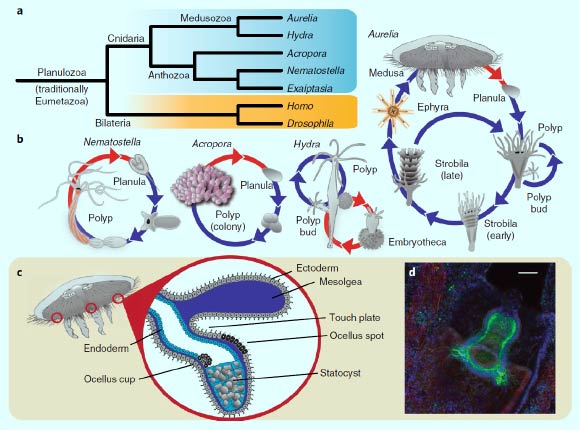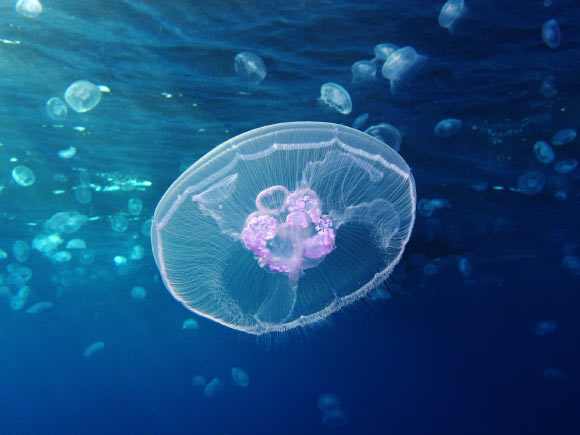A team of researchers from the United States and Germany has sequenced and analyzed the genome of the moon jellyfish (Aurelia aurita). The results show that early jellyfish repurposed an existing set of genes to transition between polyp and swimming life stages.
Jellyfish come from one of the oldest branches on the animal family tree, the phylum Cnidaria, which includes corals and anemones.
These cratures were probably the first muscle-powered swimmers in the open ocean.
They appeared in the late Precambrian era, a period of major geologic and ecological changes that preceded the Cambrian explosion of animal life.
At some point in their evolution, jellyfish gained the ability to transition from a stationary polyp to a swimming medusa.
The transition involves major changes in the jellyfish nervous system, muscles and weaponry, aka the stinging cells called cnidocytes.
An in-depth look at the genome of the moon jellyfish reveals the origins of this successful survival strategy.
“Our findings provide further evidence that evolution doesn’t necessarily make the genetic code more complex,” said Dr. David Gold, a researcher at Caltech and the University of California Davis.
“Jellyfish can build a big, complex life history using many of the same genes found in simpler animals.”

Cnidarian relationships, life cycles and sensory structures: (a) cladogram showing the phylogenic relationships between cnidarians with published genome sequences; (b) representative life cycles for cnidarians; red arrows indicate sexual reproduction; blue arrows indicate metamorphosis and/or asexual reproduction; (c) organization of the rhopalia, a sensory structure found only in certain medusozoans such as the moon jellyfish; (d) antibody staining demonstrating the clustering of tyrosinated tubulin-positive neurons (green) in the rhopalia; red – phalloidin (actin stain), green – tyrosinated tubulin; blue – TO-PRO-3 iodide (nuclear stain). Scale bar – 50 µm. Image credit: Gold et al, doi: 10.1038/s41559-018-0719-8.
The jellyfish genome analysis suggests that the medusa stage often co-opts existing developmental gene networks and cell types present in polyps.
In addition, the jellyfish appears to pattern its different life stages using many of the same genes found in animals such as fruit flies and humans.
There is a second, more controversial explanation for what the team found in the jellyfish genome.
Perhaps the similarities between the moon jellyfish genome and ‘higher’ animals demonstrate that the Cnidaria originally had a medusa life stage, which animals like corals and sea anemones lost.
“Our results can’t distinguish between these two scenarios,” Dr. Gold said.
“If the second hypothesis turns out to be correct, swimming, carnivorous animals may be even older than we think.”
The findings are published in the journal Nature Ecology and Evolution.
_____
David A. Gold et al. The genome of the jellyfish Aurelia and the evolution of animal complexity. Nature Ecology & Evolution, published online December 3, 2018; doi: 10.1038/s41559-018-0719-8








